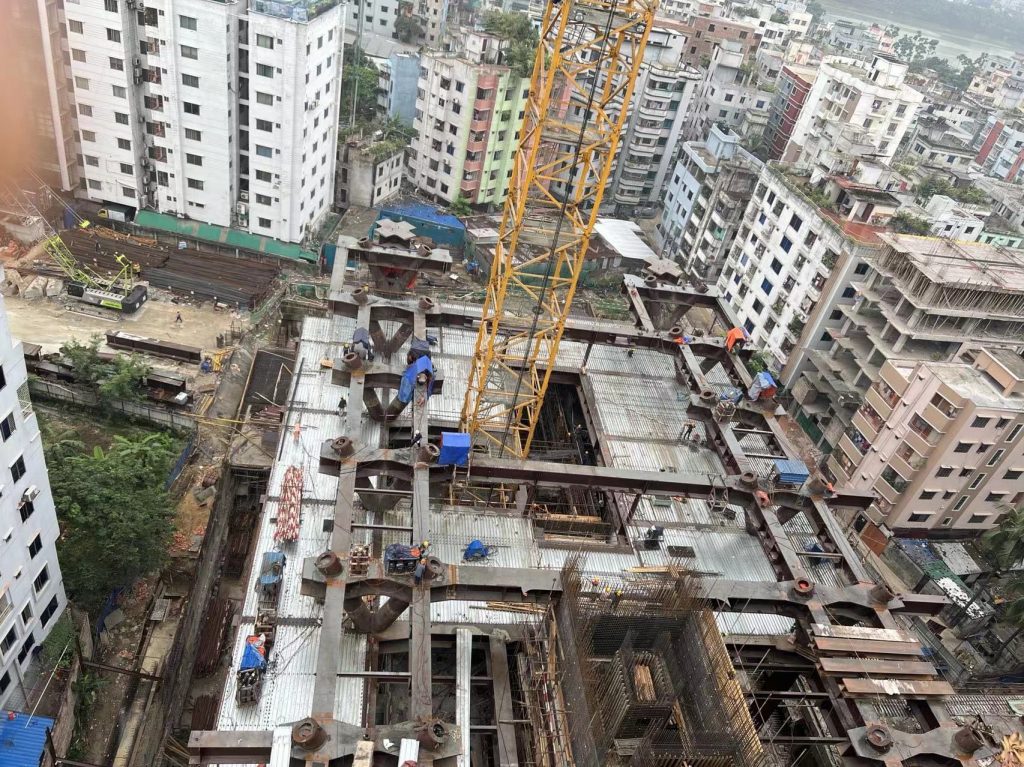Phone: 8613421351153
What are the design considerations for composite steel deck
Composite steel deck (CSD), are a combination of steel and other materials such as concrete, timber or plastic. CSDs are commonly used in the construction of bridges, buildings, and other structures. They offer greater flexibility, strength, and durability than traditional steel structures.
The design considerations for composite steel deck construction involve the structural design, the fire protection design, and the soundproofing design.
Structural Design
Composite steel deck construction requires careful consideration of structural design principles and load-bearing capacity. The structural design must take into account the strength of the steel, the stiffness of the steel, and the weight of the concrete. The steel deck must be designed to withstand the maximum load imposed by the building, including the weight of the concrete and the loads imposed by the occupants.
the load capacity
This refers to the maximum load that the deck can safely support, which is determined by the size, shape, and material of the deck. The load capacity must be sufficient to support the anticipated loads, including dead loads (weight of the deck itself) and live loads (weight of people and equipment).
the span of the deck
The span is the distance between the two support points and is a critical factor in determining the load capacity of the deck. To calculate the span, the engineer must consider the expected loads and the size, shape, and material of the deck. The span should be large enough to accommodate the expected loads but not so large that it compromises the deck’s stability and load capacity.
See related articles: How far can steel decking span
the connection of the deck to the supporting structure
This connection is critical for ensuring the safety and stability of the entire structure. The connection must be strong enough to resist the anticipated loads, and the engineer must consider the size, shape, and material of the deck as well as the type of connection (welding, bolting, etc.).
See related articles: How the steel deck is connected with the steel frame and steel column
Fire Protection Design
Composite steel deck construction requires careful consideration of fire protection design principles. The steel deck must be designed to resist the spread of fire, provide adequate protection from heat, and provide sufficient insulation from smoke. The fire protection design must also consider the use of fire-resistant materials, such as fire-rated gypsum board or fire-rated insulation.
See related articles: Design for fire resistance1
The slab thickness
The thickness of the slab determines the fire resistance of the composite steel deck. The thicker the slab, the better the fire resistance, and vice versa. Moreover, both the North American code and the European code have detailed requirements for the net thickness of the floor slab. The thickness of the floor slab is the specific requirement of the heat insulation layer in case of fire. The thicker the floor slab, the thicker the heat insulation layer is, which ensures enough safe time for people to escape.
Types of steel decks
Types of steel decks have extraordinary significance for fire resistance aging. This includes the thickness of the steel, including the shape of the steel deck. Generally speaking, the thicker the steel plate, the stronger the fire resistance; on the other hand, the fire resistance of the dovetail steel deck is better than that of the trapezoidal steel deck. This is because the dovetail steel deck is more wrapped by concrete, and its own steel plate can act as a stressed steel bar in case of fire.
Fire resistance calculation
The fire-resistant design is submitted by Steel decking suppliers. Steel decking suppliers are very familiar with their products and can perform fire-resistant calculations for the selected steel deck models according to project conditions. Solideck, as a steel decking supplier known for its technology, often provides customers with fire resistance calculations of recommended steel deck models in the early stage of steel deck design for reference by structural designers.
Soundproofing Design
Composite steel deck construction requires careful consideration of soundproofing design principles. The steel deck must be designed to reduce the transmission of sound between floors, as well as to reduce the reverberation of sound within the building. Additionally, the steel deck must be designed to create an acoustic barrier between the exterior and interior of the building. The soundproofing design should also consider the placement of soundproofing materials, such as acoustic baffles, to help reduce sound transmission.
Sound insulation is generally designed by professional architectural designers, and steel deck suppliers generally provide relevant sound effect data and relevant solutions according to engineering conditions.
Conclusion
Composite steel deck construction is a cost-effective and reliable method of constructing multi-story buildings. The design considerations for composite steel deck construction involve the structural design, the fire protection design, and the soundproofing design. The structural design must take into account the strength of the steel, the stiffness of the steel, and the weight of the concrete. The fire protection design must consider the use of fire-resistant materials and the sealing of the steel deck against water penetration. The soundproofing design should consider the placement of soundproofing materials, such as acoustic baffles, to help reduce sound transmission.

